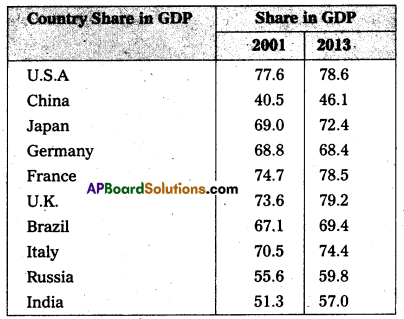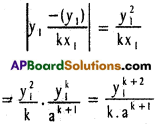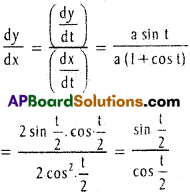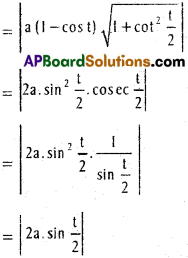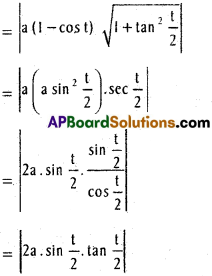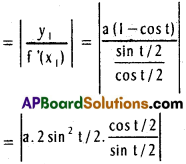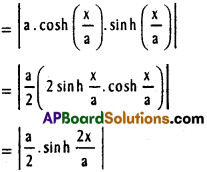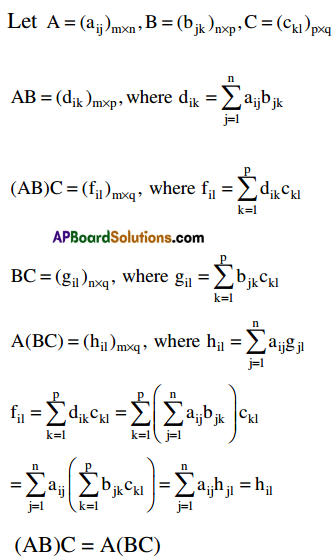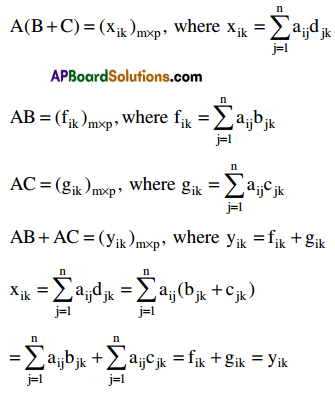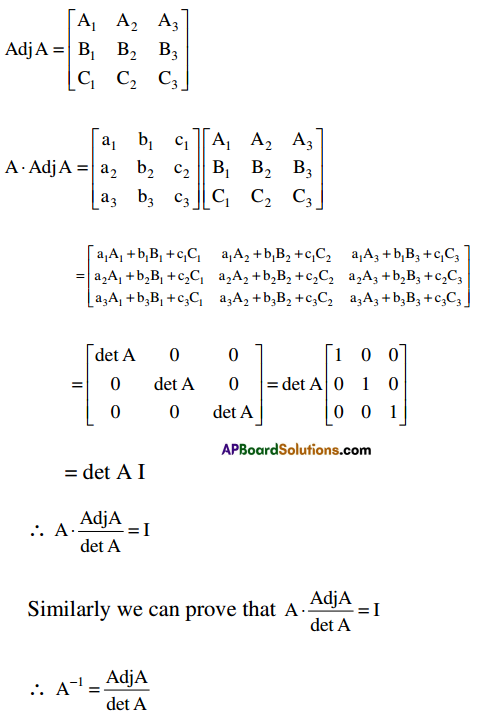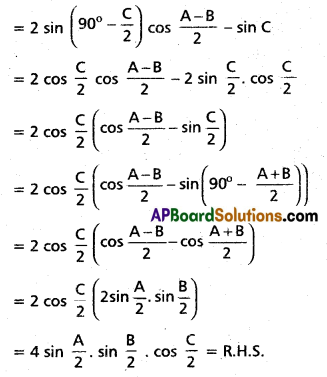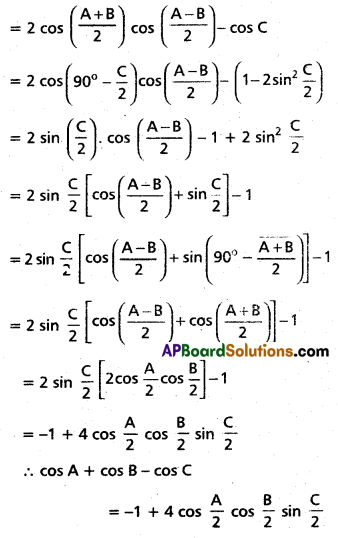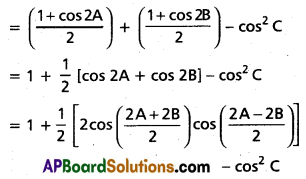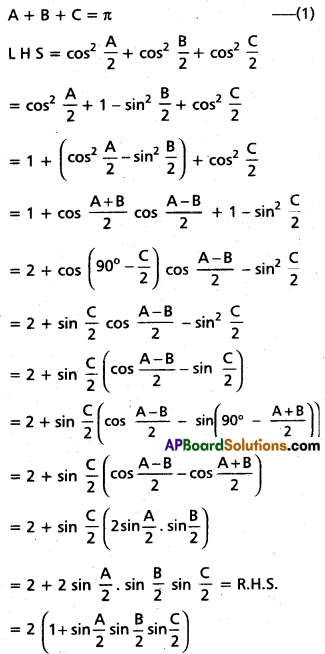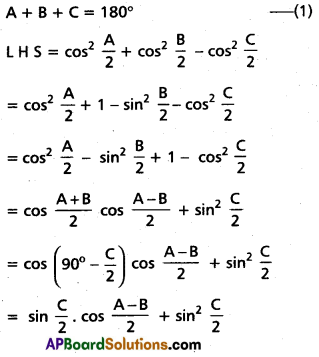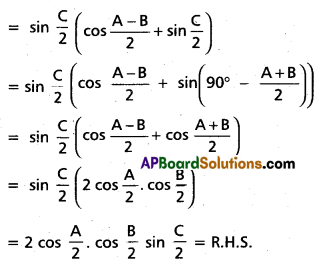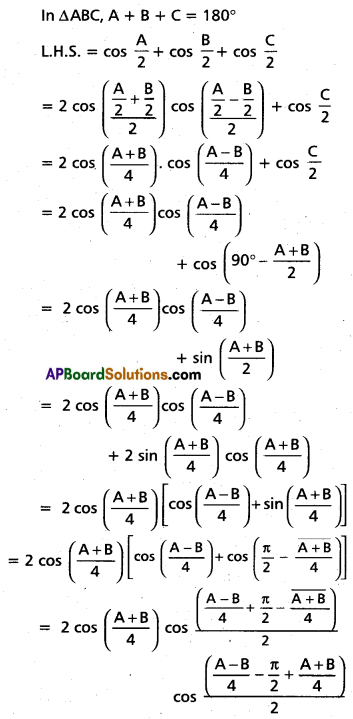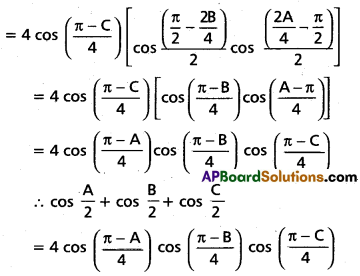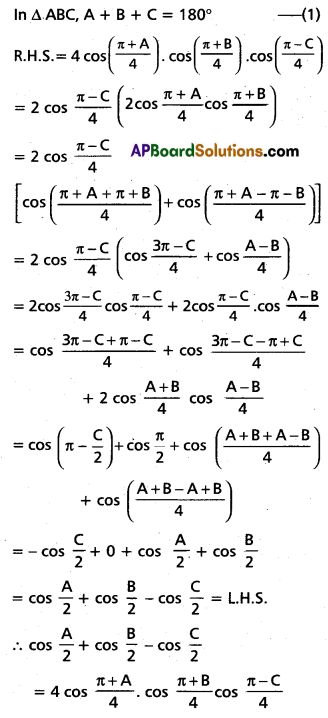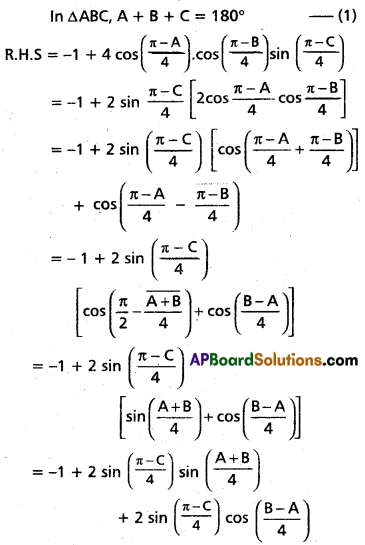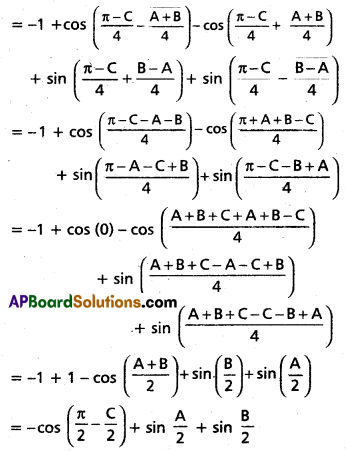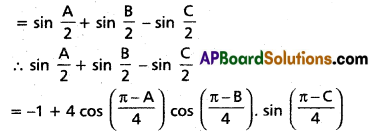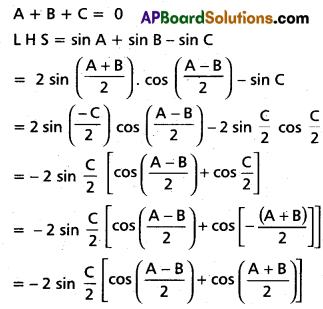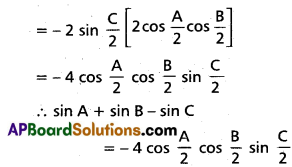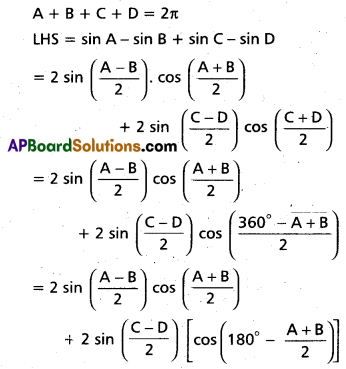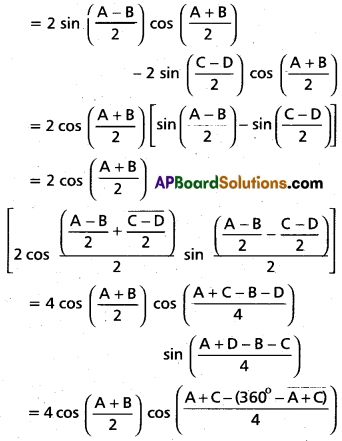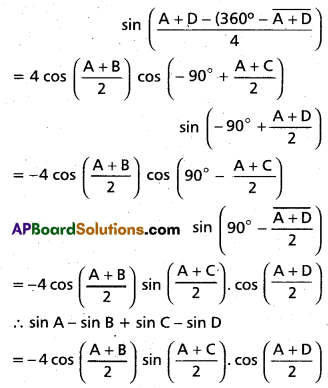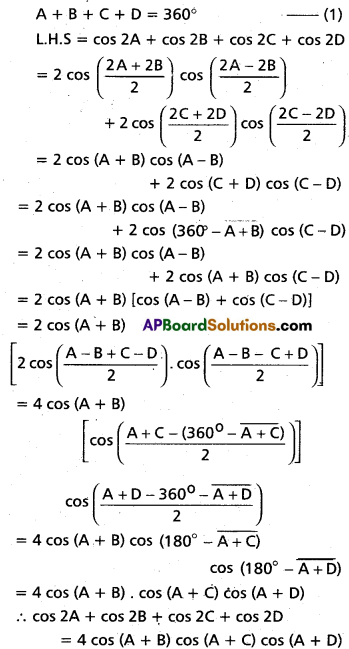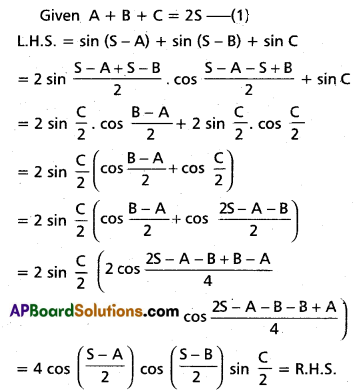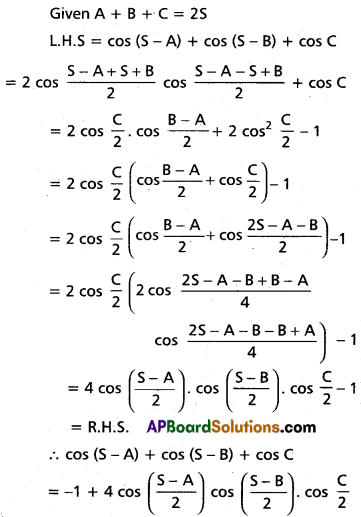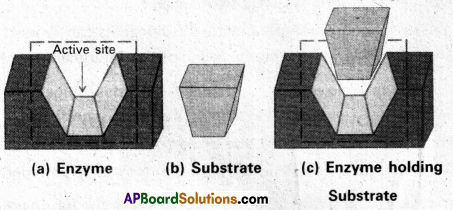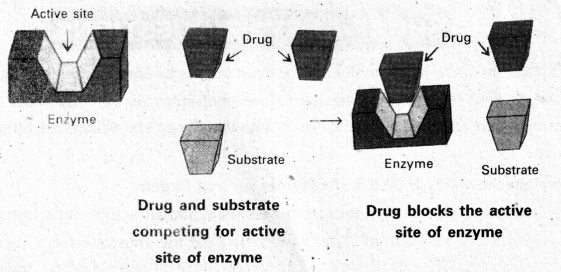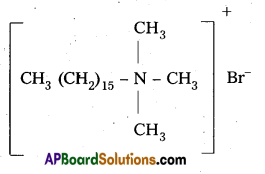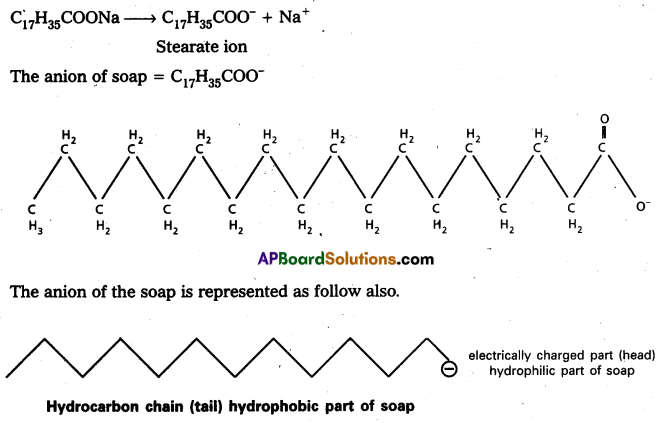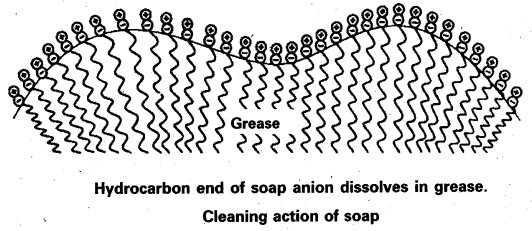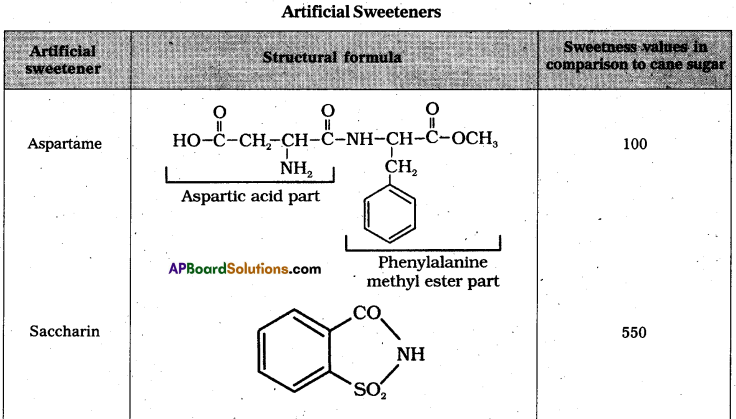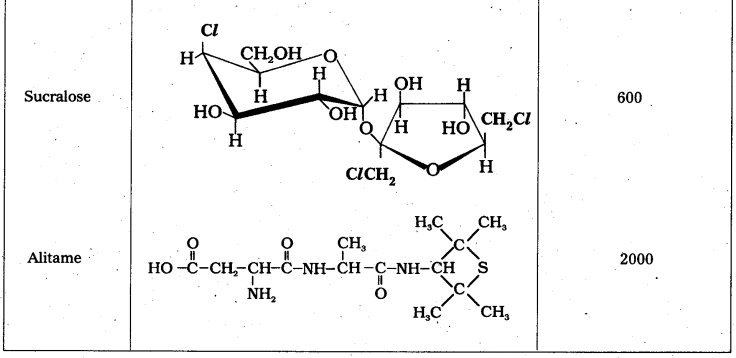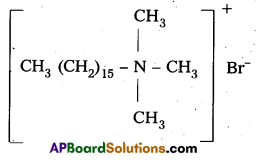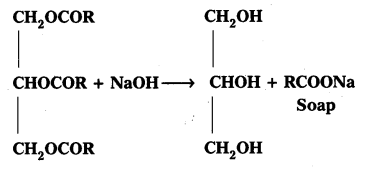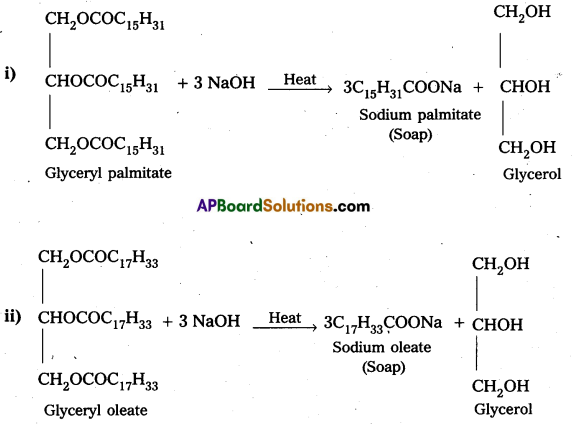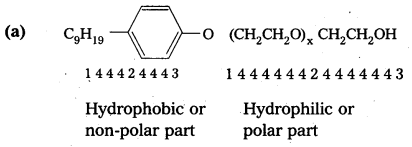Andhra Pradesh BIEAP AP Inter 2nd Year Civics Study Material 3rd Lesson Union Executive Textbook Questions and Answers.
AP Inter 2nd Year Civics Study Material 3rd Lesson Union Executive
Long Answer Questions
Question 1.
Explain the powers and functions of the President of India.
Answer:
Introduction:
The President of India is the constitutional head of the Indian Republic. He is the First citizen of India. He administers the affairs of the union Government either himself or through the officers subordinate to him. (Articles 52 and 53)
Qualifications :
A person to be eligible to contest the office of the President shall possess the following qualifications :
- He should be a citizen of India.
- He should have completed the age of 35 years.
- He should be qualified for election as a member of the Lok Sabha.
- He should not hold any office of profit under the union, state or local Governments (Article 59 (i))
- Possess such other qualifications as prescribed by the Parliament.
Election Procedure :
The President of India shall be elected indirectly by an electoral college consisting of the elected members of both Houses of Parliament. State Legislative Assemblies and elected members of Delhi and Pondicheri. The election is held in accordance with the system of proportional representation by means of a single transferable vote system and secret ballot.
Oath of office :
The person who is elected as President assumes office only after he takes oath of office and secrecy by the Chief Justice of India.
Term of office :
The President continues in office for five years from the date of his assumption of office.
Salary and Allowances :
The President now gets a monthly salary of ₹ 1,50,000/-. His official residence is Rashtrapathi Bhavan at New Delhi. On retirement, he will get a monthly pension of ₹ 75,000/-.
Removal (or) Impeachment :
The President can be removed from the office by a process of impeachment for violation of the constitution. Impeachment is a quasi-judicial procedure adopted by the Parliament.
Powers and Functions :
The President shall exercise his powers with the help of the Council of Ministers headed by the Prime Minister. His powers may be analysed under the following heads :
1. Executive Powers :
An executive action of the Union Government shall be expressed in the name of the President. The President appoints the Prime Minister and other Ministers, Attorney General, Comptroller and Auditor General of India, State Governors, Judges of the Supreme Court and State High Courts, Finance Commission, Chairman and members of U.P.S.C., Election Commission, and Chief Commissioners of Unit Territories. He allocates portfolios to the Ministers.
2. Legislative Powers :
The President is an integral part of Parliament (Art. 79) and as such enjoys extensive legislative powers.
They are :
- He summons from time to time each House of Parliament, adjours, and prorogues either or both the Houses.
- He addresses either House separately or both the Houses Jointly.
- He can dissolve the Lok Sabha on the advice of the Prime Minister.
- He opens the first session of Parliament after the General Elections and at the commencement of the first session of each year.
- He can send messages to the Parliament.
- He arranges a joint session of both the Houses when there is a dead-lock over an ordinary bill.
- All bills passed by Parliament require his assent for becoming in acts.
- He nominates 12 members to Rajya Sabha and two Anglo Indian members to Lok Sabha.
- He promulgates ordinances when the Parliament is not in session.
- He sends the annual reports of Finance Commission, U.P.S.C etc., for the consideration and approval of Parliament.
3. Financial Powers :
The President also enjoys some financial powers. They are :
- He recommends the financial bills to be introduced by the members in parliament. The Budget is caused to be laid down before the Parliament by the President.
- He operates the Consolidated Fund of India.
- He determines the shares of States in the proceeds of Income Tax.
- No Money Bill can be introduced in the Parliament except on his recommendations.
- He constitutes a Finance Commission for every five years etc.
4. Judicial Powers :
- The President can grant pardons, reprieves, respites or remission of punishments.
- He appoints the judges of the Supreme Court and State High Courts.
- He can also remove them on an address by the Parliament.
5. Military Powers:
The President is the Supreme Commander of the Defence Forces of the Union. He appoints the Chiefs on the Staff for Army, Navy, and Air Force. He can declare war and conclude peace. But he has to take the approval of Parliament.
6. Diplomatic Powers :
The president appoints Ambassadors to foreign countries to represent India. He receives the credentials of the Ambassadors appointed in India. He represents our Nation in International affairs. He makes treaties and agreements with other countries subject to the ratification by the Parliament.
7. Emergency Powers :
In extraordinary conditions, the President can proelaim emergency to safeguard the security, integrity, and independence of our country. They are of three types :
- Emergency caused by war or external aggression or armed rebellion (Article 352).
- Emergency due to failure of Constitutional machinery in the States (Article 356)
- Emergency due to threat to the financial stability of India (Article 360).

Question 2.
Write briefly the Emergency powers of the President of India. [Mar. 16]
Answer:
Articles 352 to 360 of part XVIII of Indian constitution deals with three types of emergency powers of the Indian President. They are :
- National Emergency,
- Constitutional Emergency,
- Financial Emergency
They may be explained as follows.
1) National Emergency : (Article 352)
The President exercises this power during the period of war, external aggression or armed rebellion. He declares emergency if he is satisfied that the sovereignty and security of India or any part thereof is threatened by external aggression.
When National Emergency is in force, the federal provisions of our constitution ceases to operate. So far, National Emergency was proclaimed on four occasions in our country. They are : 1. Chinese Aggression (1962), 2. Indo – Pak war (1965), 3. Indo – Pak war in the context of Bangladesh Liberation Movement (1971), 4. Opposition’s call for blocking Parliament (1975).
2) Constitutional Emergency : (Article 356)
Article 356 of Indian constitution empowers the President to proclaim the constitutional emergency. If the President, on receipt of a report from the Governor or other wise; is satisfied that a situation has arisen in which the government of a state cannot be carried on according to the constitutional provisions. He is empowered to proclaim this emergency. It is also called as the President’s Rule. So far this type of emergency was proclaimed for over 100 times.
3) Financial Emergency : (Article 360)
If the President is satisfied that a situation has arisen where by the financial stability or credit of India is threatended, then he may proclaim financial emergency in the country. During the period of financial emergency, the President enjoys the following powers.
- The President may reserve all the money bills or other financial bills of the state after they are approved by the state legislature.
- He may reduce the salaries and allowances of all or any person serving in the states.
- The President can reduce the salaries allowances of the persons working at the union level including the judges of the Supreme Court and the State High Courts. But so far the financial emergency has not been yet imposed in the country.
Question 3.
Discuss the powers and functions of the Prime Minister of India. [Mar. 18, 16]
Answer:
The Prime Minister is the real executive head of the Union Government. He occupies an important position in the administration of our country. Since India has a Parliamentary form of Government the real power rests with him. He is the ‘uncrowned king’ and “the keystone of the Cabinet arch in the Union Government”.
Qualifications :
- He should be citizen of India.
- He should have completed the age of 25 ytears.
- He should be qualified for election as a member of the Lok Sabha.
- He should not hold any office of profit under the union or state or local governments.
Appointment:
The President appoints the Prime Minister. Generally the President has to summon the leader of the majority party in the Lok Sabha to form the Ministry. If no party gets an absolute majority, the President can use his discretion and summon the leader of the party, who in his opinion can manage to form a ministry. Afterwards the Prime Minister will be asked to prove his majority in the Lok Sabha.
Oath of Office :
The President of India will administers the oath of office of the Prime Minister.
Term of Office :
The Prime Minister shall remain in office during the pleasure of the President. But actually he assumes his powers as long as he retains the confidence of the majority members in the Lok Sabha. He resigns when the Lok Sabha accepts a no-confidence motion against his ministry.
Salary and Allowances:
The salary and allowances of Prime Minister are decided by the Parliament from time to time. He gets his salary and allowances that are payable to a member of Parliament. At present the Prime Minister gets a salary and allowances of ₹ 1,60,000/- per month.
Powers and Functions :
The Prime Minister is the head of the union government. He is the real executive. The Council of Ministers cannot exist without the Prime Minister. His powers are explained here under.
1) Leader of the Union Cabinet:
The Prime Minister is the leader of the Union Cabinet and Union Council of Ministers. He selects some eminent members of his party in parliament and sees that they are appointed as ministers by the President. He has a free choice of both allocating portfolios and reshuffling the ministry. All the ministers are personally and politically loyal to the Prime Minister. He decides the agenda, of the cabinet meetings. Further, he presides over the cabinet meetings.
2) Leader of the Union Government:
The Prime Minister acts as the leader of the union government. The union executive (Union Council of Ministers) initiates its business after the swearing in ceremony of the Prime Minister. All the ministers in the union ministry assume their office, owe their position and exercise their powers along with the Prime Minister. Infact, the Prime Minister influences the nature and working of the union government. He not only has a clear understanding but holds complete control over the affairs of the union government. All the high-level officers and the entire ministry in the union government behave and act according to the wishes of the Prime Minister.
3) Leader of the parliament:
The Prime Minister acts the leader of the Parliament in India. He is primarily a member of Parliament. He extends co-operation to the presiding officers in the smooth conduct of the two Houses. He wields complete control over his party members in the Parliament. He ensures that his party members maintain discipline during the sessions of the Parliament. He informs out the cabinet decisions to the Parliament. He communicates the major domestic and foreign policies of the union government to the members of Parliament. He maintains rapport with the opposition leaders and discusses the major issues confronted by the nation with them.
4) Link between the President and the Council of Ministers :
The Prime Minister acts as the main link between the President and the Union Council of Ministers. It is his duty to communicate to the President about the decisions of the Union Council of Ministers. He furnishes the every information required by the President concerning the affairs of union government. All the ministers shall formally meet the President only with the consent of the Prime Minister.
5) Leader of the Majority Party:
The Prime Minister acts as the leader of the majority party or group in the lower House of Parliament. He participates in the meetings of the party and acquaints his party members on various issues and steps taken by his ministry in implementing the party promises. He utilizes the services of the senior party leaders in running the government. He acts as the main link between the part and the government.
6) Leader of the Nation :
The Prime Minister is the leader of the nation. He takes initiative in finding solutions to several problems in the internal matters of the country. He plays an important role in the development of the nation.
7) Maker of Foreign Policy :
The Prime Minister plays a dominant role in shaping the foreign policy of the nation. He keeps in touch with the developments in all countries. He meets Heads of various countries and maintains friendly relations with them.
8) Chairman of NITI Aayog :
The Prime Minister heads the NITI Aayog (National Institution for Transforming India) NITI Aayog means policy commission. It is a policy think tank of government of India that replaces planning commission which aims to involve the states in economic policy making in India. It will provide strategic and technical advice to the central and state governments. It will have a governing council comprising Chief Ministers of all the states and it governors of Union Territories. Union government set up the NITI Aayog on January 1,-2015.
Question 4.
Explain the composition, powers and functions of the Union Council of Ministers. .
Answer:
Article 74 (1) of the Constitution provides for a Council of Ministers at the Centre. It’s main function is to aid and advice the President in the performance of his duties. It consists of Prime Minister and other Ministers. It is this body which runs the entire administration of our country. It is thefreal Executive authority of the country. It functions on the ‘Principle of Collective Responsibility1. It holds office till it continues to enjoy the confidence and support of the Lok Sabha.
Formation of Council of Ministers :
The formation of the Council of Ministers starts with the appointment of the Prime Minister. The President appoints the Prime Minister and on the advice of the Prime Minister, the other Ministers are appointed by the President.
Composition of Council of Ministers :
Our Constitution did not mention the exact size of the Union Council of Ministers. But there are three kinds of Ministers:
- Cabinet Ministers
- Ministers of State
- Deputy Ministers.
The Cabinet Ministers are entrusted with the maintenance of some important ministries. They enjoy independence and decision making powers.
The Ministers of State act as the heads of some important sections in the ministry. They are directly responsible to the Prime Minister for their activities.
The Deputy Ministers have no independent and discretionary powers. They assist the Cabinet Ministers and perform the functions assigned to them.
The Cabinet or the Council of Ministers is the pivot around which the entire administration of our country revolves. “It is the steering wheel of the ship of the State.” It is the hyphen that joins the Executive and Legislative organs of the Government.
Powers and Functions :
1. Executive Powers :
The Union Cabinet is a deliberative and policy formulating body. It discusses and decides all National and International policies of the country. The policies decided by the cabinet are carried out by the Ministers. It directs and leads the Parliament for action and gets its approval for all its policies. It coordinates and guides the activities of departments of the Government. It also plays an important role by suggesting persons for all major appointments. It considers the reports of various committees before they are presented to the Parliament.
2. Legislative Powers :
The Cabinet plans the legislative programme of the Government at the beginning of each session of Parliament. It drafts Bills on all important matters and introduces them in the Parliament. It also decides the time of summoning and prorogation of Parliament. The inaugural speech of the President to the Parliament is prepared by the Cabinet.
3. Financial Powers:
The Cabinet possess important financial powers. It has complete control over national finance. It prepares the Union Budget. It decides what taxes are to be imposed and how much of expenditure is to be incurred. Money Bills are always introduced in the Lok Sabha by the Finance Minister.
4. Foreign Relations :
In the field of foreign relations also the Cabinet plays an important role. It determines and formulates the foreign policy of the country and decides India’s relations with other countries. It considers and approves all international treaties and agreements.
Collective Responsibility :
Article 75(3) of Indian constitution stated that the union council of Ministers shall be collectively responsible to the Lok Sabha, for all their acts of commissions and commissions. They act as a team under the leadership of the Prime Minister. They sail together, they swim together and they sink together.
Conclusion:
It is thus clear that the Council of Minister or Cabinet enjoys far reaching powers both with regard to the internal and external policies of the country. Internally it maintains law and order within the country and externally protects the country from foreign aggression. The progress of the country largely depends upon the ability of the Cabinet.
Short Answer Questions
Question 1.
How is the President of India elected?
Answer:
The President of India shall be elected indirectly by an electoral college consisting of the elected members of both Houses of Parliament. State Legislative Assemblies and elected members of Delhi and Pondicheri. The election is held in accordance with the system of proportional representation by means of a single transferable vote system and secret ballot.
Each member of the Electoral College has one vote. But the value of the vote differes from State to State. The value of the vote of a Parliament member also differs from the value of the vote of a member of State Assembly.
The value of the vote of an M.L.A is worked out as follows. The total population of the State is divided by the total number of elected members of the Assembly. The quotient thus obtained is to be divided by 1,000. Fractions of half or more should be counted as one and added to the quotient. If it is less than half, it is ignored. This may be shown as follows.
- Value of vote of an M.L.A = Population of State / number of elected members of the Assembly / 1,000.
- Value of vote of M.P. = Total value of votes of all Assembly members / Total number of elected members of both Houses of Parliaments.
This method is followed to keep the election of the President above narrow political considerations.

Question 2.
Write briefly about the procedure of impeachment of President
Answer:
The President may be removed from the office for violation of the constitution by a process of impeachment. Impeachment is a quasi-judicial procedure adopted by the Parliament. Either House of Parliament shall prefer the charge for removal of the President. The other House shall investigate into the charges itself or cause the charge to be investigated.
There are four stages in the impeachment of the President.
Firstly the impeachment resolution has to be moved with a 14 days prior notice in writing signed by not less than 1/4th of the total members of that House. Such a resolution has to be passed by a majority of not less than 2/3rds of the total members of the House.
Secondly, the resolution approved by the first House will be sent to the second House for consideration and approval.
Thirdly, the second House investigates into the charges directly or constitutes a committee to enquire into the charges. The President has the right to present his views directly or through a deputy during such enquiry.
Fourthly, if the charges against the President are established and adopted by the second House with 2/3rds majority of the total members, the President stands removed from the office. With regard to voting on the resolution for impeachment, only the elected members cast their vote. No president has so far been impeached in our country till today.
Question 3.
Mention any two Emergency powers of the Indian President.
Answer:
1) National Emergency : (Article 352)
The President exercises this power during the period of war, External aggression or armed rebellion. He declares emergency if he is satisfied that the sovereignty and security of India or any part thereof is threatened by external aggression.
When National Emergency is in force, the federal provisions of our constitution ceases to operate. So far, National Emergency was proclaimed on four occasions in our country. They are :
- Chinese Aggression (1962) ‘
- Indo – Pak war (1965) .
- Indo – Pak war in the context of Bangaldesh Liberation Movement (1971)
- Oppositions call for blocking Parliament (1975)
2) Constitutional Emergency : (Article 356)
Article 356 of Indian constitution Empowers the President to proclaim the constitutional emergency. If the President, on receipt of a report from the Governor or other wise, is satisfied that a situation has arisen in which the government of a state cannot be carried on according to the constitutional provisions. He is empowered to proclaim this emergency, It is also called as the President’s rule. So far this type of emergency was proclaimed for over 100 times.
Question 4.
Explain the role and position of the President in Union Government.
Answer:
The President of India is the head of the union executive. He is the first citizen of India. He could exercise many powers as enstined in the constitution in the following manner.
Position of the President:
There are different opinions on the actual position of the president of India in the administration of our country. The farmers of the constitution wanted him to be a nominal Head of the state.
Dr. Ambedkar compared his position to that of the British King Sri. M. C. Setalved, the farmer Attorney General of India mentioned that the position of the President of India is like the king in England and the Governor General in a Dominion. Sri Alladi Krishna Swamya Ayyar also said that it was perfectly clear that our presidents position was similar to that of the constitutional Monarch in England.
Jawaharlal Nehru, the first Prime Minister of India, said that “We have not given our President any real power but we have made his position one of great authority and dignity.” These opinions make it clear that our President is only a nominal figure head and he does not have any real powers. This is confirmed by the 42nd Amendment of the constitution of India.
However, the President exercises independent powers under some conditions. He utilises these powers in regard to the appointment of the Prime Minister, dissolving the Lok Sabha and ordering midterm poll to the Lok Sabha. Some presidents like Sanjiva Reddy, Zail Singh, R.Venkata Raman, Dr. S.D. Sharma etc., utilised their discretionary powers where there was political instability or Hung Parliament after the general elections in the country. Like the Monarch of England, he still enjoys three rights the right to be ! consulted the right to encourage and the right to warn.
Question 5.
Write about any two powers of the Vice – President of India.
Answer:
The Vice President of India occupies the second highest position in the union government. He is accorded a rank next to the President.
Qualifications :
A person to be eligible as vice-president should possess the following qualifications.
- He should be a citizen of India.
- He should have completed 35 years of age.
- He should be qualified for election as a member of the eousil of states.
- He should not hold any office of profit under the union, state or local Governments in India.
Election :
The election of the vice – president like that of the President shall be indirect and in accordance with the system of proportional representation by means of the single transferable vote system. He is elected by the members of an electoral college consisting of the members of both the houses of Parliament.
Term of Office :
The Vice-President holds office for a term of 5 years from the date on which he enters his office.
Removal:
The Vice President may be removed from his office by a resolution of the council of states passed by a majority of all the members of the council and agreed to by the house of the people.
Salary and Allowances :
The Vice President of India receives a monthly salary of ₹ 1,25,000/-in addition, he is entitled to daily allowance, free furnished residence, medical, travel and other facilities.
Powers and Functions :
The Vice – President is the ex-officio Chairman of the Rajya Sabha. As. such he enjoys the same powers like the Speaker of Lok Sabha, such as (1) presiding over the meetings of Rajya Sabha, (2) maintaining discipline, decency and decorum in the House, (3) exercising casting vote in case of a tie, (4) admitting visitors, (5) protecting the privileges and rights of the members. He has no right with regard to money bills.
Acting as President of India :
He discharges the functions of the President during the temporary absertce of the President. He may take over the office of the President under 4 situations like (1) Death of the President, (2) Resignation of the President, (3) Removal of the President, (4) Inability of the President due to absence, illness or any other cause.
Question 6.
How is the Prime Minister appointed?
Answer:
Article 75 (1) of the Indian constitution deals with the appointment of the Prime Minister of India.
Appointment:
The constitution simply lays down that the Prime Minister shall be appointed by the President. After the conduct of General Elections to the Lok Sabha, the President has to invite the majority party leader of the Ldk Sabha to form the Government.
When no single party is able to secure majority seats in Lok Sabha, the President invites the leader of a coalition to form the Government. The president uses his discretionary powers in this regard. The President appoints the leader of the coalition as the Prime Minister on the condition that he has to prove his majority in the Lok Sabha within a specified period. Being the leader of the majority in Lok Sabha to be the Prime Minister, the person has to be a member of Parliament. If he is not a member at the time of appointment, he has to acquire it within six months from the date of his appointment as Prime Minister.
The powers of the President in choosing, inviting and appointing the Prime Minister cannot be questioned in any court of Law.

Question 7.
Explain the role of the Prime Minister in Union Government.
Answer:
The prime Minister plays a predominant role in the affairs of the union government. He will have an indelible impression on every one in the administration of the union government. He is described as the Primus Interparus (first among equals). His role as the leader of the Union Council of Ministers, Union Cabinet, Party in power, Lok Sabha, Nation and as the link between the President and the Union Council of Ministers is unique. He wields tremendous political power and patronage. He enjoys enormous powers and fulfils innumerable tasks. It all depends on the image, influence, stature, and personality of the Prime Minister in the union government.
Jawaharlal Nehru, Dr. Ambedkar, and other eminent leaders of the National Movement and members of the Constituent Assembly described the Prime Minister as the linchpin of the union government. It is in this context that Sir william Harcourt remarked that every one expects from the Prime Minister dignity and authority, firmness to control, tact, practice and firmness, an impartial mind, a tolerant temper, a kind and prudent counsellorship, and accessibility to the people.
Question 8.
Describe the composition and powers of the Union Council of Ministers.
Answer:
Composition of Council of Ministers :
Our Constitution did not mention the exact size of the Union Council of Ministers. But there are three kinds of Ministers: 1) Cabinet Ministers 2) Ministers of State 3) Deputy Ministers.
The Cabinet Ministers are entrusted with the maintenance of some important ministries. They enjoy independence and decision making powers.
The Ministers of State act as the heads of some important sections in the ministry. They are directly responsible to the Prime Minister for their activities.
The Deputy Ministers have no independent and discretionary powers. They a&ist the Cabinet Ministers and perform the functions assigned to them.
The Cabinet Or the Council of Ministers is the pivot around which the entire administration of our country revolves. “It is the steering wheel of the ship of the State”. It is the hyphen that joins the Executive and Legislative organs of the Government.
Powers and Functions :
1) Executive Powers :
The Union Cabinet is a deliberative and policy formulating body. It discusses and decides all National and International policies of the country. The policies decided by the cabinet are carried out by the Ministers. It directs and leads the Parliament for action and gets its approval for all its policies. It co-ordinates and guides the activities of departments of the Government. It also plays an important role by suggesting persons for all major appointments. It considers the reports of various committees before they are presented to the Parliament.
2) Legislative Powers :
The Cabinet plans the legislative programme of the Government at the beginning of each session of. Parliament. It drafts Bills on all important matters and introduces them in the Parliament. It also decides the time of summoning and prorogation of Parliament. The inaugural speech of the President to the Parliament is prepared by the Cabinet.
3) Financial Powers :
The Cabinet possesses important financial powers. It has complete control over national finance. It prepares the Union Budget. It decides what taxes are to be imposed and how much of expenditure is to be incurred. Money Bills are always introduced in the Lok Sabha by the Finance Minister.
4) Foreign Relations :
In the field of foreign relations also the Cabinet plays an important role. It determines and formulates the foreign policy of the country and decides India’s relations with other countries. It considers and approves all international treaties and agreements.
Very Short answers
Question 1.
Composition of the Union Executive.
Answer:
The constitution of India provides for the Union Executive. Articles 52 to 78 in part V of the constitution deal with the union executive. The Union Executive consists.
i) The President
ii) The Vice-President
iii) The Prime Minister and
iv) The Union Council of Ministers
Question 2.
Qualifications required for contesting the Presidential elections.
Answer:
A person to be eligible to contest the office of the president shall possess the following qualifications.
- He should be a citizen of India.
- He should have completed the age of 35 years.
- He should be qualified for election as a member of the Lok Sabha.
- He should not hold any office of profit under the Union, State or Local Governments.
- Possess such other qualifications as prescribed by the Parliament.
Question 3.
Election of President.
Answer:
The President of India shall be elected indirectly by an electoral college consisting of the elected members of both houses of Parliament, State Legislative Assemblies and elected members of Delhi and Pondicheri. The election is held in accordance with the system of proportional representation by means of a single transferable vote system and secret ballot.
Question 4.
Important appointments of President.
Answer:
The president has the power to appoint the following high dignitaries :
- The Prime Minister of India.
- Members of the union council of Ministers.
- The Affomey General of India.
- The Comptroller and Auditor general of India.
- The judges of the Supreme Court and the High Court.
- State Governors etc.
Question 5.
Judicial Powers of the President.
Answer:
- The President can grant pardons, reprieves, respites or remission of punishments.
- He appoints the Judges of the Supreme Court and State High Courts.
- He can also remove them on an address by the Parliament.
Question 6.
Article 352. [Mar. 18, 16]
Answer:
Article 352 of the Indian constitution empowers the President to impose National Emergency during the period of war, External Aggression, Armed Rebellion or internal disturbance. So far National Emergency was proclaimed on Four occasions. They are :
- Chinese Aggression (1962)
- Indo – Pak War (1965)
- Indo – Pak war in the context of Bangladesh Liberation movement (1971) and
- Opposition’s call for blocking Parliament (1975).
Question 7.
Article 356.
Answer:
Article 356 of Indian Constitution empowers the President to proclaim the constitutional emergency. If the President on receipt of a report from the governor or otherwise is satisfied that a situation has arisen in which the government of a state cannot be carried on according to the constitutional provisions. He is empowered to proclaim this emergency. It is also called as the President’s Rule.
Question 8.
Financial Emergency.
Answer:
If the President is satisfied that a situation has arisen where by the financial stability or credit of India is threatened then he may proclaim financial emergency in the country as per Article 360 of the Indian Constitution.
Question 9.
National Emergency.
Answer:
Article 352 of the Indian constitution empowers the president to impose National Erpergency during the period of war, External Aggression, Armed Rebellion or Internal disturbances. When National Emergency is in force, the Federal provisions of our constitution cease to operate. So far, National Emergency was imposed four times in 1962, 1965, 1971 and 1975.
Question 10.
Qualifications required for contesting as Vice-President. [Mar. 16]
Answer:
A person to be eligible for election as Vice-president should possess the following qualifications : ,
- He should be a citizen of India.
- He should have completed 35 years of age.
- He should be qualified for election as a member of the council of states.
- He should not hold any office of profit under the Union, State or Local Governments in India.
Question 11.
Chairman of Rajya Sabha,
Answer:
The Vice President is the ex-officio chairman of the Rajya Sabha. As such he enjoys the same powers like the speaker of Lok Sabha such as
- Presiding over the meetings of Rajya Sabha.
- Maintaining discipline, decency and decorum in the House.
- Exercising casting vote in case of a tie.
- Protecting the privileges and rights of the members.
Question 12.
Appointment of Prime Minister.
Answer:
After the conduct of General elections of the Lok Sabha, the President has to invite the majority party leader of the Lok Sabha to form the Government. When no single party is able to secure majority seats in Lok Sabha, the President invites the Leader of a coalition to form the Government. The president uses his discretionary powers in this regard.
Question 13.
Categories of Union Council of Ministers.
Answer:
There are three kinds of ministers in the union council of ministers. They are
- Cabinet Minister.
- Ministers of State.
- Deputy Ministers.
1) The Cabinet Ministers are entrusted with the maintenance of some important ministries like Finance, Home, Defence etc.
2) The Ministers of state act as the heads of some important sections in the Ministry. They are directly responsible to the Prime Minister for their activities.
3) The Deputy Ministers have no independent and discretionary powers. They assist the Cabinet Ministers.
Question 14.
Any two functions of the Union Cabinet.
Answer:
- The Union Cabinet formulates the policies of the union government. It finalizes the domestic as well as foreign policies of the nation after having serious deliberations.
- It pilots several bills in the Parliament at various stages and strives to secure the approval of the latter.

Question 15.
Collective Responsibility. [Mar. 18]
Answer:
Article 75 (3) of Indian constitution stated that the union council of Ministers shall be collectively responsible to the Lok Sabha, for all their acts of omissions and commissions. They act as a team tinder the leadership of the Prime Minister. They sail together, they swim together and they sink together.
![]()
![]()





























